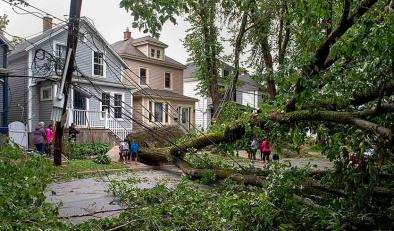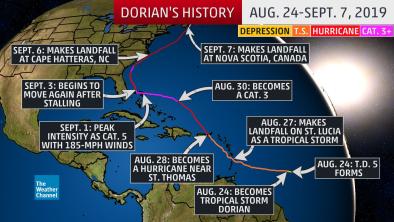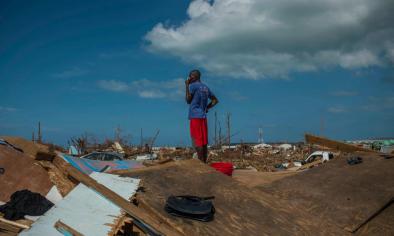Science Source
Hurricane stalling along the North American coast and implications for rainfall
- States that the average speed of tropical cyclone (TC) translation has slowed since the mid 20th century
- Reports that North Atlantic (NA) TCs have become increasingly likely to “stall” near the coast, spending many hours in confined regions
- States that the stalling is driven not only by slower translation, but also by an increase in abrupt changes of direction
- Computes residence-time distributions for TCs in confined coastal regions, and finds that the tails of these distributions have increased significantly
- Shows that TCs stalling over a region result in more rain on the region
- Finds that, together, increased stalling and increased rain during stalls imply increased coastal rainfall from TCs, other factors equal
- Finds a significant positive trend in coastal annual-mean rainfall 1948–2017 from TCs that stall, and verifies that this is due to increased stalling frequency
- Makes no attribution to anthropogenic climate forcing for the stalling or rainfall; the trends could be due to low frequency natural variability
- Regardless of the cause, the significant increases in TC stalling frequency and high potential for associated increases in rainfall have very likely exacerbated TC hazards for coastal populations
Related Content
Headline

Sep 9, 2019 | Weather Underground
Ex-Dorian Slams Canada at Cat 2 Strength; Cat 3 Typhoon Faxai Pounding Tokyo
Headline

Sep 9, 2019 | The Weather Channel
Hurricane Dorian Ravaged the Bahamas and Struck the Southeastern U.S. Coast Before Heading to Atlantic Canada
Headline

Sep 9, 2019 | New York Times
Corpses Strewn, People Missing a Week After Dorian Hit the Bahamas
Headline

Sep 6, 2019 | The Guardian
Hurricane Dorian: 'We're at the frontline of climate change but we don't cause it', says Barbados PM – as it happened


